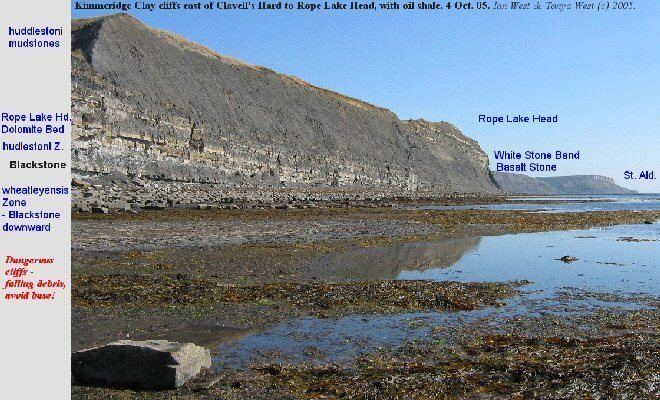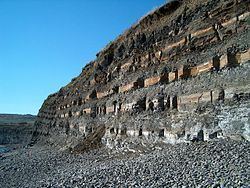 | ||
The Kimmeridge Clay Formation is a sedimentary deposit of fossiliferous marine clay which is of Jurassic age and occurs in Europe. The fossil fauna of the Kimmeridge Clay includes turtles, crocodiles, sauropods, plesiosaurs, pliosaurs and ichthyosaurs, as well as a number of invertebrate species. The formation is the major source rock for North Sea oil.
Contents

Description

Kimmeridge Clay is named after the village of Kimmeridge on the Dorset coast of England, where it is well exposed and forms part of the Jurassic Coast World Heritage Site. It exists across England, in a band stretching from Dorset in the south-west, north-east to East Anglia.
The Humber Bridge's foundations are in the Kimmeridge Clay deposits under the Humber estuary.
Economic importance

Kimmeridge Clay is arguably the most economically important unit of rocks in the whole of Europe, being the major source rock for oil fields in the North Sea hydrocarbon province. It has distinctive physical properties, log responses, and palynological signature.

A Kimmeridge Oil Shale Project (KOSP) has been pursued by the UK based oil and shale gas exploration company Cuadrilla Resources.
Ornithischians

Indeterminate nodosaurid remains have been found in Wiltshire, England. Indeterminate stegosaurid remains have been found in Dorset and Wiltshire, England.
Saurischians
Indeterminate ornithomimmid remains have been found in Dorset, England. An undescribed theropod genus was found in Dorset.
Invertebrates
The invertebrate fauna of the Kimmeridge Clay includes:
